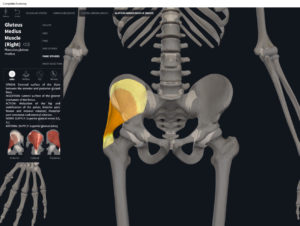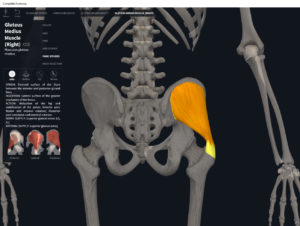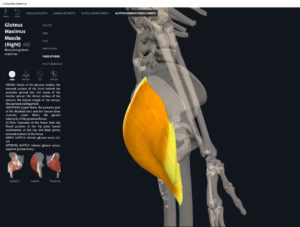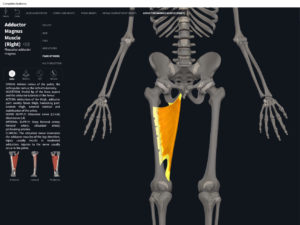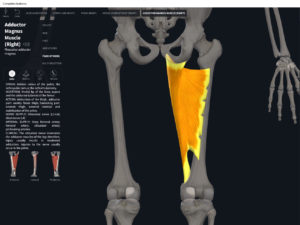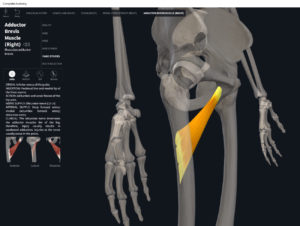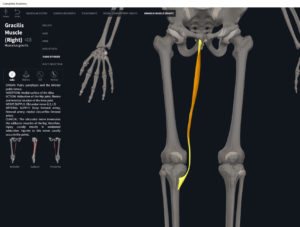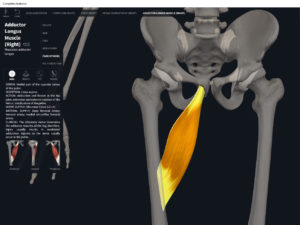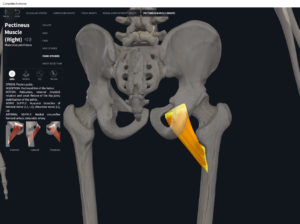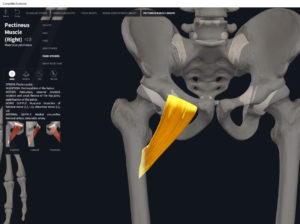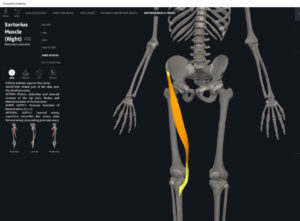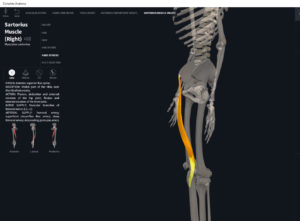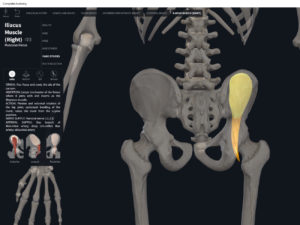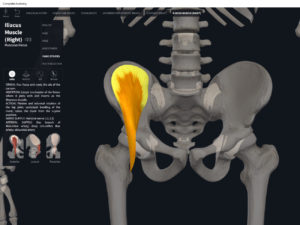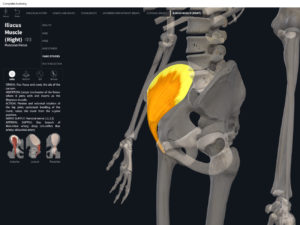Anatomy & Physiology: Muscles—Gluteus Medius.
Structure.
- Anterior Fibers:
- Origin: outer surface of ilium.
- Insertion: lateral surface of greater trochanter of femur.
- Posterior Fibers:
- Origin: outer surface of ilium.
- Insertion: lateral surface of greater trochanter of femur.
Function.
- Concentric action: Anterior fibers—accelerates hip abduction and internal rotation. Posterior fibers— accelerates hip abduction and external/lateral rotation.
- Reverse mover action: ipsilateral depression, posterior and anterior tilt, contralateral rotation of pelvis.
- Eccentric action: decelerates hip adduction and external rotation.
- Isometric action: dynamic stabilization of lumbo-pelvic hip complex.
- Innervation: superior gluteal nerve.
- Arterial supply: superior gluteal artery.
Clinical Significance.
More.
- https://www.anatomynext.com/gluteus-medius/
- https://www.youtube.com/watch?v=jmwLJ1OQKJM
- https://www.youtube.com/watch?v=GwPe0JwYbrA
References
Biel, A. (2015). Trail guide to the body: A hands-on guide to locating muscles, bones and more.
Clark, M., Lucett, S., Sutton, B. G., & National Academy of Sports Medicine. (2014). NASM essentials of corrective exercise training. Burlington, MA: Jones & Bartlett Learning.
Jenkins, G., & Tortora, G. J. (2012). Anatomy and Physiology: From Science to Life, 3rd Edition International Stu. John Wiley & Sons.
Muscolino, J. E. (2017). The muscular system manual: The skeletal muscles of the human body.
